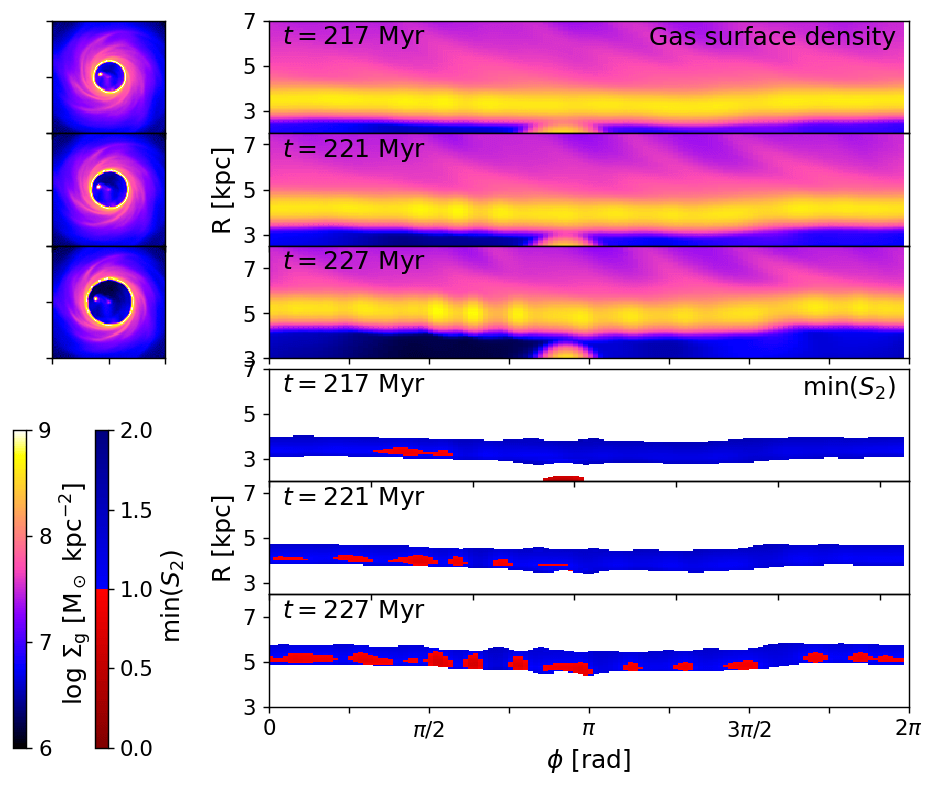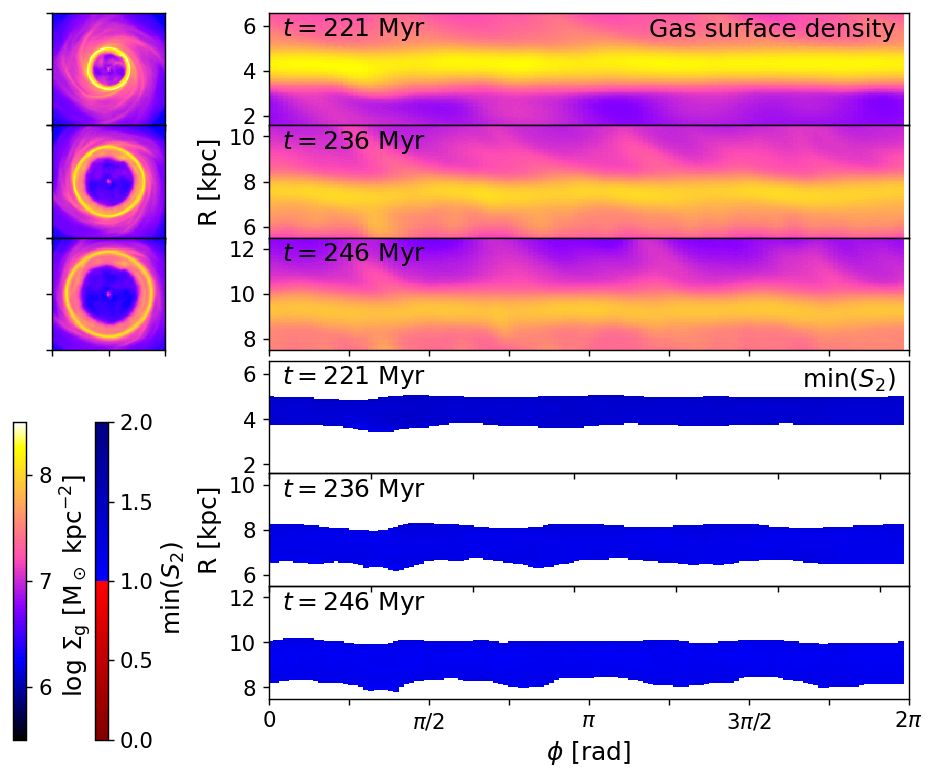研究成果・発表論文
Fragmentation of ring galaxies and transformation to clumpy galaxies
Inoue, Shigeki, Yoshida, Naoki, & Hernquist, Lars
要旨
We study the fragmentation of collisional ring galaxies (CRGs) using a linear perturbation analysis that computes the physical conditions of gravitational instability, as determined by the balance of self-gravity of the ring against pressure and Coriolis forces. We adopt our formalism to simulations of CRGs and show that the analysis can accurately characterize the stability and onset of fragmentation, although the linear theory appears to underpredict the number of fragments of an unstable CRG by a factor of 2. In addition, since the orthodox ’density- wave’ model is inapplicable to such self-gravitating rings, we devise a simple approach that describes the rings propagating as material waves. We find that the toy model can predict whether the simulated CRGs fragment or not using information from their pre-collision states. We also apply our instability analysis to a CRG discovered at a high redshift, z = 2.19. We find that a quite high-velocity dispersion is required for the stability of the ring, and therefore the CRG should be unstable to ring fragmentation. CRGs are rarely observed at high redshifts, and this may be because CRGs are usually too faint. Since the fragmentation can induce active star formation and make the ring bright enough to observe, the instability could explain this rarity. An unstable CRG fragments into massive clumps retaining the initial disc rotation, and thus it would evolve into a clumpy galaxy with a low surface density in an interclump region.








 Ja En
Ja En